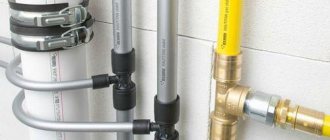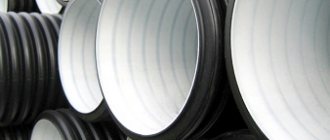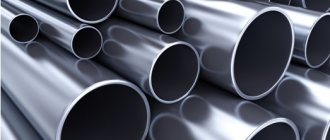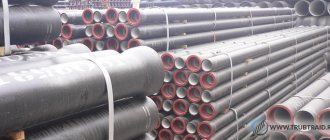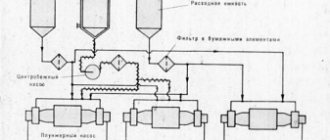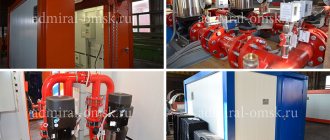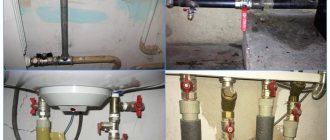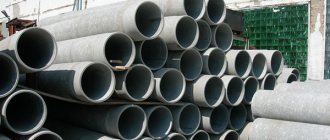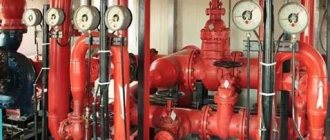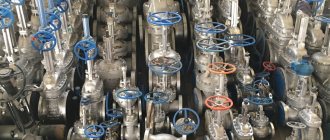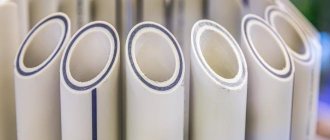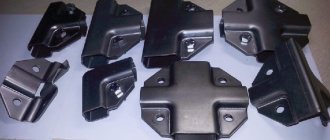General information
When making cardboard sleeves, you can use a spiral and direct method of winding (winding) layers of paper of different densities.
Rolled products are made from cellulose or waste paper. The manufacturer's logo is often depicted on the outside of the pressed cardboard tube, which can be any color. Winding pulp and paper roll materials is much cheaper than manufacturing cylindrical glass, metal, plastic, and wooden analogues.
If we talk about standardization as such, then the wall thickness, diameter, length of pressed cardboard pipes, and other product parameters can be arbitrary, depending on the wishes of the customer. Although, all products must comply with the uniform requirements of TU 5450–003–11499586–98.
Cardboard pipes in Moscow
3 m prefabricated duralumin pipe for background
Fotokvant BGA-K21 cardboard tube for studio backgrounds 210 cm
Fotokvant BGA-D3 aluminum pipe for background 3 m
Fotokvant BGA-K27 cardboard tube for studio backgrounds 275 cm
Cardboard box “T-22”, 320x200x125 mm, brown, 10 pieces (number of items included: 10)
Strobolight - Aluminum background pipe 3.25 meters wide to avoid sagging
Cardboard box, 570x380x380 mm, brown, corrugated cardboard, P-32, BC profile, 10 pieces (number of items included: 10)
Paper background FST 2.72x11m 1021 leafy
Cardboard box, 380x380x228 mm, brown, corrugated cardboard, T-23, profile B, 10 pieces (number of items included: 10)
3 m solid duralumin pipe for background
Huge cardboard box (288 liters)
Cardboard box, 440x315x320 mm, brown, T-22 corrugated cardboard, profile B, 10 pieces
Source
Manufacturing process
Most cardboard tube manufacturers use the spiral winding method. The essence of this technology: they take paper strips, which can have a certain length, width, density, wind them in the form of spirals one on top of the other, cover them with glue, which makes them especially durable and compact.
By the way, adhesive additives can also vary in both quality and price. Most often, in the production of cylindrical products from pressed cardboard, composite adhesives and adhesive mixtures are used.
The glued pipe blank can be of any length. Using the specified order parameters, or guided by GOST, it is cut into specific sizes. Typically, this step occurs automatically immediately after forming and gluing the cardboard sleeve. At the same time, special equipment provides control over the strength of products, identical external dimensions, diameter, and wall thickness.
Technological drying is the last stage of manufacturing pipes from pressed cardboard using the winding method.
produces roll materials only from high-quality material. Pipes made of pressed cardboard are characterized by increased strength, because, in addition to good material, in their production the company uses a special compound that is used to treat the ends of finished spools, tubes, and bushings.
Making a paper pipe.
Despite all the seeming primitiveness of the technology, the production of paper pipes (bushings) contains a sea of different subtleties. Everything plays a significant role - the paper used, the mandrel, the glue and even the organization of the workplace. It should be convenient to work. Paper has different strength, resistance to moisture and ability to warp when moistened, and different grades of paper shrink differently when dried. It is worth remembering and taking into account the properties of paper during work. More often than others, modelers have to look at ordinary stationery paper, whatman paper, wrapping paper, and craft paper. To make the most of your visit to McDuck, you can order ice cream to go, they will give it to you in a branded paper bag made from good craft - it might come in handy! In any case, you will have to adapt to a particular type of paper, experiment, and try it in practice. In theory, everything is suitable. The situation is the same with glue - both paste (flour, starch potato or rice paste is very good), and casein, and dextrin, and PVA are suitable. Some people will need epoxy - there are different cases. All have different adhesive ability, thickness, penetration, water resistance, and operating time. And again, in practice you will have to adapt to the use of a specific glue. Tools . First of all, you need a mandrel , often also called a mandrel - a rod or tube of a regular round shape with a smooth outer surface and sufficient strength for the work being done. The material can be different - metal, wood, plastic, etc. The diameter of the fitting corresponds to the required internal diameter of the pipe. Sometimes, to make it easier to remove the paper pipe from the seal, it is necessary to use a separating lubricant : soap, wax, petroleum jelly, silicone grease, VD-40, etc. Sometimes, to compensate for the shrinkage of the paper tube after drying, you can use winding on the mandrel to the required thickness of a thin Mylar film; at the same time, it will also facilitate the process of removing the finished paper tube from the mandrel. Cling film and tape are also suitable. The desktop should also have a flat, clean, smooth surface, preferably waterproof. Irregularities in the working table will be imprinted on the surface of the tube. A good option is to work on a sufficiently sized piece of chipboard, cheap and cheerful. You can roll the paper onto the mandrel with your palm, but more interesting results are obtained when using a special tool called a “rollbret” (from German rollen - roll, das Brett - board), i.e. in our opinion - “wheelchair” or “roller” . A professional tool designed for everyday hard work has handles on the top side for comfortable holding, while an improvised roller can look like any board with a smooth, even working surface and sufficient dimensions. It will be more convenient to apply the glue with a wide brush , preferably one that does not lose bristles. a slightly damp cotton rag at hand ; a piece of an old sheet or pillowcase will do just fine. “Slightly damp” means wet and squeeze thoroughly; there should be no drips from the rag and no puddles should remain.
Everything plays a significant role - the paper used, the mandrel, the glue and even the organization of the workplace. It should be convenient to work. Paper has different strength, resistance to moisture and ability to warp when moistened, and different grades of paper shrink differently when dried. It is worth remembering and taking into account the properties of paper during work. More often than others, modelers have to look at ordinary stationery paper, whatman paper, wrapping paper, and craft paper. To make the most of your visit to McDuck, you can order ice cream to go, they will give it to you in a branded paper bag made from good craft - it might come in handy! In any case, you will have to adapt to a particular type of paper, experiment, and try it in practice. In theory, everything is suitable. The situation is the same with glue - both paste (flour, starch potato or rice paste is very good), and casein, and dextrin, and PVA are suitable. Some people will need epoxy - there are different cases. All have different adhesive ability, thickness, penetration, water resistance, and operating time. And again, in practice you will have to adapt to the use of a specific glue. Tools . First of all, you need a mandrel , often also called a mandrel - a rod or tube of a regular round shape with a smooth outer surface and sufficient strength for the work being done. The material can be different - metal, wood, plastic, etc. The diameter of the fitting corresponds to the required internal diameter of the pipe. Sometimes, to make it easier to remove the paper pipe from the seal, it is necessary to use a separating lubricant : soap, wax, petroleum jelly, silicone grease, VD-40, etc. Sometimes, to compensate for the shrinkage of the paper tube after drying, you can use winding on the mandrel to the required thickness of a thin Mylar film; at the same time, it will also facilitate the process of removing the finished paper tube from the mandrel. Cling film and tape are also suitable. The desktop should also have a flat, clean, smooth surface, preferably waterproof. Irregularities in the working table will be imprinted on the surface of the tube. A good option is to work on a sufficiently sized piece of chipboard, cheap and cheerful. You can roll the paper onto the mandrel with your palm, but more interesting results are obtained when using a special tool called a “rollbret” (from German rollen - roll, das Brett - board), i.e. in our opinion - “wheelchair” or “roller” . A professional tool designed for everyday hard work has handles on the top side for comfortable holding, while an improvised roller can look like any board with a smooth, even working surface and sufficient dimensions. It will be more convenient to apply the glue with a wide brush , preferably one that does not lose bristles. a slightly damp cotton rag at hand ; a piece of an old sheet or pillowcase will do just fine. “Slightly damp” means wet and squeeze thoroughly; there should be no drips from the rag and no puddles should remain.
Technical process. For example, a pipe 200 mm long is rolled from rolled packaging paper (sold at OBI) on PVA, on a 16 mm mandrel. Those. its length is 12.5 calibers. The main problem of making long thin paper pipes is not so much the knurling itself, but how to then remove this pipe from the lining. Especially if the pipe is also thin-walled. We place the paper blank on the work table, apply a warp and make the first turn, tucking the end of the sheet under the warp with our fingers. We check and align the right edge of the paper strip with the edge of the sheet, then the tube will roll smoothly. We check that the warp is tightly and evenly covered with the paper blank. If everything is good, we roll the heel 1-2 mm onto the tail of the workpiece and press it against the table with one hand so that the workpiece does not unwind while we coat it with glue with the other hand.
If the workpiece is long, there is no need to coat it all with glue at this stage - the paper will have time to get wet, warp, and folds or tears will appear when knurling. It is enough to apply glue to the width of the brush and immediately roll this part. Now the tube will no longer unwind. Lightly moisten the remaining tail of the sheet with a damp cloth, coat it with glue and roll the entire pipe to the end. We remove excess glue from the rolled tube with a rag, and smooth the seam with it. And we wipe the table if necessary.
A lot of glue means a lot of wiping, and excess glue likes to get under the pipe and stick it to the warp. We place the rolled tube on the table, cover it with a roller blade and roll it in the same direction in which it was rolled. The working stroke is from yourself, we press and roll the finished tube on the mandrel on the table, on the reverse movement there is no need to press on the roller, we simply return to the starting position. And so 3-4 times. After this procedure, we try to carefully move the tube onto the trimmed edge of the mandrel, tightening it and at the same time turning it from side to side on the mandrel. We remember that when turned in one direction, the damp paper tube will tend to tighten around the navoynik, while in the other direction the navoynik will push this noose away from itself. Having locked a couple of pipes at this stage, you can already feel with your hands which direction to twist, how to tighten, whether it is necessary to change the thickness of the glue or, perhaps, the surface of the seal needs to be lubricated.
If our foil has a cut-off end, we move the sleeve towards it and trim the end of our paper pipe with a sharp knife. If the pipe does not have a straight end, you can cut the tube straight with a knife on a table, on a lathe, or you can come up with a simple device for this operation - it all depends on availability, desire, necessity and expediency.
Now I often use another method of winding the initial section of the pipe, when this section of the workpiece is bent to the width of the first turn and the first turn is thus made not in one layer, but in two.
They folded it, aligned it, greased the tail from below, applied it, turned the warp a little - created tension on the paper, greased the tail from above and stamped the initial section. Next we proceed as described above.
Now the tubes are damp and need to be thoroughly dried before further use. The paper tube should not dry too quickly - it will warp, so there is a reason to dry it naturally. To do this, I usually wrap the freshly rolled tubes in a couple of layers of newspaper and leave them for a day or two away from drafts and heat sources.
To calculate the required length of a paper strip for rolling tubes of a given diameter and wall thickness, at one time I quickly wrote a primitive script in Perl: (blatt.pl) The working algorithm is the simplest - we consider our pipe a multilayer cylinder of N-layers, determine the circumference each layer and sum them up. Knowing the diameter of the mandrel, the thickness of the paper sheet and the number of layers (i.e., the required thickness of the tube wall, because the thickness of the paper is known), we obtain the required length of the paper blank. The width of the workpiece will be the length of the paper tube.
In conclusion, I note once again that, by analogy, you can make tubes from glass and carbon fiber, balsa or any other veneer, ceiling or depron - you never know what may be required in creative practice. And it’s better to do it once than to google it a hundred times; no one will give you your personal experience except you. Thank you for attention! And, according to tradition - creative success!
Properties of pressed cardboard pipes
The popularity of paper spools, sleeves, and bushings is explained by their reliability, as well as a number of important properties that similar analogues do not have.
They differ:
- moisture resistance;
- special accuracy of linear parameters (up to 10‾⁵ m);
- presence of rolled edges.
Plus, according to the order, they can be laminated, foil-coated, both on internal and external surfaces. The sleeve, spool, bushing can be multi-colored or single-color both inside and outside.
Sleeves made of pressed cardboard can be manufactured with a technical cutout, die-cuts and other elements specified by the customer.
Areas of application
Pipes made of pressed cardboard are most often produced to order and sold in wholesale and retail trade. They are used to produce various rolled materials and products. The cardboard sleeve has found its application both in various sectors of the national economy and in domestic conditions.
It is used for winding:
- roll-type polymer materials: technical, food stretch film, transparent and colored tape, runway;
- rolled materials for textile production: artificial and natural fabrics, threads, yarn, fibers;
- roll-type materials for the pulp and paper industry: corrugated cardboard, toilet paper, paper for office equipment, self-adhesive labels, parchment, offset paper, paper for the production of bags;
- materials for construction purposes: steam and waterproofing polyethylene foam materials, roofing felt, sandpaper, construction mesh, insulating tape;
- packaging materials: household twine, linen twine, packaging tape, double- and single-sided adhesive packaging film.
In addition, it is impossible to imagine the food, alcoholic beverage, chemical and other sectors of the national economy without express packaging in the form of paper tubes. Tea, coffee, salt, chips, bottles of alcoholic and non-alcoholic drinks, spices, packaged in a cardboard tube look very attractive and can be used as a high-quality original gift. In such cylindrical express packaging, powder mixtures, washing powders, and other chemical industry products become unusually beautiful.
And for the first time they began to use cardboard spools in the arms industry, when in the 18th century. They began to be used in the manufacture of paper cartridge cases.
About raw materials for making cardboard sleeves
Pressed cardboard pipes are made practically from waste paper, which includes:
- paper for printing, drawings, drawing, sack;
- packaging waste;
- used corrugated cardboard type;
- waste of ordinary cardboard, rolled materials;
- used notebooks, books, notepads.
In addition, waste paper includes all types of offset paper, unnecessary documents from institutions, organizations, and archives.
Any waste paper cannot be covered with tape or polyethylene, latex, as well as with metal and other types of inclusions, since such raw materials are unsuitable for the production of cardboard sleeves.
Waste paper is accepted at special points where recyclable materials are sorted, which determines their cost. After processing, paper waste acquires a second life in the form of pressed cardboard sleeves, spools, bushings, and tubes.
Packaging materials Sleeves Cardboard tube assorted
Price for one
Please note the color may differ from the photo.
To prevent wrinkles from forming on the fabric during long-term storage, the fabrics are wound on such a cardboard tube.
Sometimes used for decoration. There are no reviews for this product yet.
Collections Shells
Prices are indicated in rubles per piece
- Name
- Retail
- Small wholesale
- OPT
Warning
: Invalid argument supplied for foreach() in
/home/users/v/vanserje/domains/obivtkani.ru/tovar/index.php
on line
283
60% - 70% discount on Eureka.
Special prices for luxury flock cuts.
- Relax 6110 2000 RUR
- Eureka and Bentley 4710 1500 rub.
Prices are valid only for cuts in stock in the store on the street. Bolshaya Pochtovaya, 43-45 building 5.
All prices are raised, but we are LOWERED.
Unbelievable but true!
- Hurry up to buy:
- Decorative molding link
- Decorative nails link
- Blanks for making buttons link
- Button press link
Attention, quantity is limited!
Hits! Fabrics in stock.
- Buy matting Tempo for 370 RUR.
- Flock Sherlock buy for 600 RUR.
- Luxury eco-leather buy for 420 RUR.
- Marco matting buy for 460 RUR.
- Buy artificial leather Eva for 550 RUR.
As well as 8 collections of fabrics and a large number of cuts in stock!
PROMOTION! Free delivery to the TK Terminal!
Attention!
Place an order for an amount of RUB 2,000 or more.
And we will deliver to the Transport Company Terminal in Moscow - free of charge!
Only shipments by Transport Companies PEK, Business Lines, Baikal-Service, GTD TK (KIT), Zheldorekspeditsiya, Boxberry participate!
Sale due to assortment change!
Source
